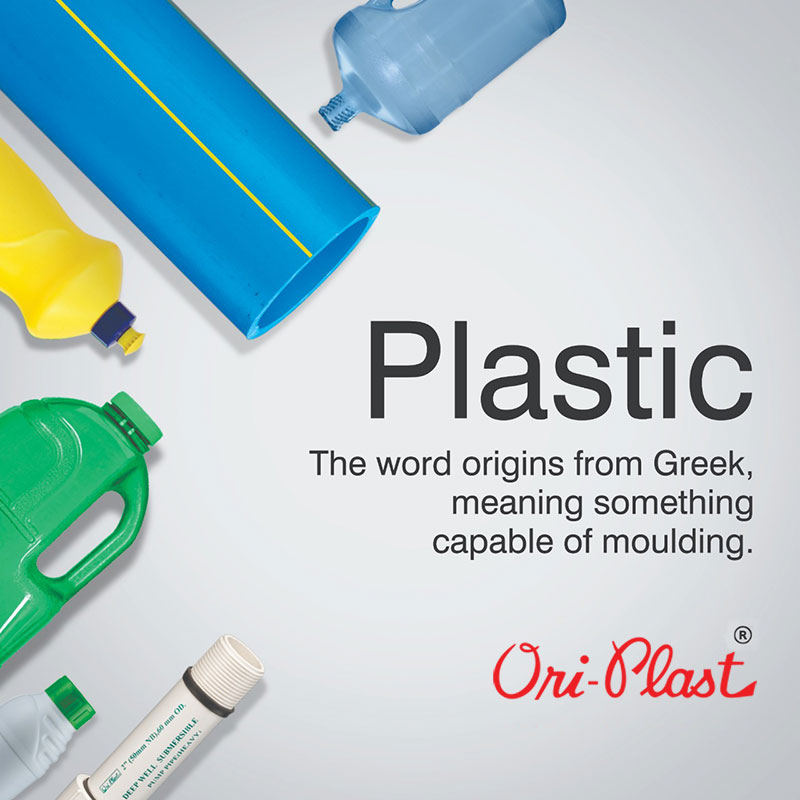Plastic – originally derived from Greek word ‘plastikos’ – literally means something capable of moulding. Plastics are widely used in various forms, shapes and types all over the world. The innovation of plastic is one of the most influential discoveries in chemical sciences. Ever wonder how it all started and when? Let’s take a nosedive into the history of plastics and their consequent evolution.
History of Plastics and Their Evolution
Plastic is a generic name for a vast range of synthetic or semi-synthetic organic polymers with great malleability. Hence, from hair pins to pipes to spacecrafts – you find plastics in every sphere of life today. But, how did it all start?
- Historical anecdotes and evidences put the use of natural plastic materials such as shellac etc. in human civilizations across the world as an instance almost more than a millennium years old.
- The first noted instance of modern plastic discovery was by British inventor Alexander Parkes. He named it ‘Parkesine’ (a variety of cellulose) and brought before the world in an international exhibition in London in the year 1862.
- The next important step was taken by the American Hyatt brothers, who improved the material Parkesine by adding camphor to it and marketed it after renaming it as Celluloid in 1870.
- This proved to be a huge stepping stone from industrial perspective. The easily manufactured and even more easily modifiable raw material – Celluloid – soon became a very useful replacement for costly natural materials like tortoiseshell, horn, ivory and linen. It was almost a revolution in itself.
- In 1907, came the next breakthrough in the form of Bakelite invented by Leo Baekeland. It’s the first mass-produced synthetic plastic, created from phenol.
- Invention of Bakelite lead to discoveries of a number of now-familiar modern age synthetic plastic materials, such as polystyrene in 1929, polyester in 1930, polythene and Polyvinyl chloride (PVC) in 1933, nylon in 1935.
- Then followed the devastating World Wars. As detrimental they were to humanity and global peace, the wars stimulated huge growth in plastic industries. Because a number of war accessories were successfully developed using different types of these plastics
- After the wars came to end, the petrochemical companies started developing mass-consumables new plastic products such as polyethylene terephthalate (PET) in 1941, Tupperware in 1948, Chlorinated Polyvinyl Chloride (CPVC) in 1960s and so on. With just a little bit of chemical tweaking, numerous varieties of plastics evolved offering different physical attributes such as their robustness, strength etc
- Itactually transformed industries. Plastics being the super economic, more durable, easily procured and almost zero-maintenance products, soon replaced natural, and hence costly, ingredients like glass, ceramics, wood, fabrics, metals and a number of other such commonly used raw materials all over the world.
At Ori-Plast, our deep learning and knowledge of plastics and its history over the past decades has enabled us to understand the dynamics of this industry. This understanding also creates the basis for new ideas. Just the last few years have seen numerous inventions of new kinds of plastics and the same plastics finding various new applications.
Plastics Today
Plastics have edged out other materials and industries altogether on account of their versatility and easy processing. Plastic jars and bottles have significantly simplified the storage of fluids and food and extended their life; plastic furniture has made easier the task of room decoration and made it more durable. Plastic piping has ensured that we get reliable water supply for a lifetime without having to worry about corrosion and leakages. Plastic dashboards have decreased the weight of cars and reduced fuel consumption while making the car itself safer for the user. And wherever plastics have been more expensive than their conventional alternatives, they have convinced the user to adapt them due to their extended life cycle.
The Drawback
The long life cycle of plastics is a double-edged sword though since it results in improperly discarded products damaging the environment. The slow natural degradation of plastics ensures that they stay pretty much as is for a very long time in landfills and water bodies.
Although, many ingenious solutions are coming up through research, such as – edible plastic wraps and cutleries, plastic fuels, screens for trapping plastic microfibers from synthetic clothes in washing machines, 3D printing using plastic, along with plastic eating fungi and bacteria etc. are coming up rapidly. With the right planning and proper resourcing, one of these may become the next big step in plastic evolution very soon.
However, if plastics are to remain a wonder material appreciated by users then the producers and users of this fantastic synthetic substance need to become more responsible and aware of how they do use and discard it. We will discuss solutions and try to establish good practices in a separate discussion.




